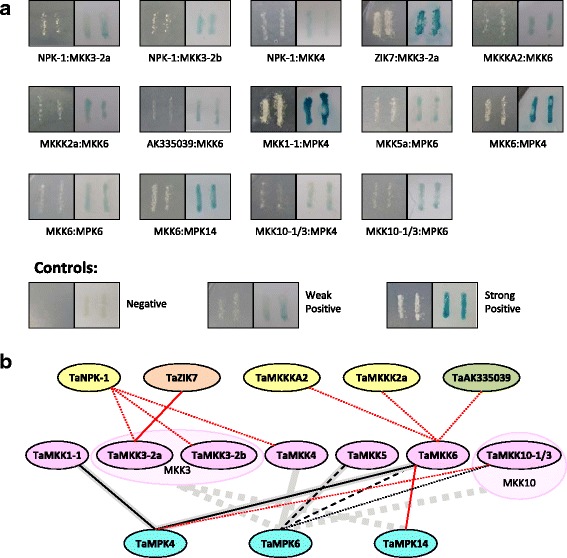Fig. 11.

Wheat MAPK interaction map. a Pictures of positive Y2H interactions. Robust or weak growth on dropout medium (SC-Leu-Trp-His +3AT) (left interaction boxes) and colour intensity in an X-gal assay (right interaction boxes) indicate strong positive or weak positive interactions, as compared with the controls. b Schematic representation of positive interactions observed between TaMKKK-TaMKKs and between TaMKKs-TaMPKs. TaMKKKs from the Raf-like (yellow), ZIK-like (peach), and MEKK-like (green) clades were screened for interactions with TaMKKs (violet), which were screened for interactions with TaMPKs (teal). Positive TaMKKK-TaMKK and TaMKK-TaMPK Y2H interactions are indicated with solid (strong positive), dashed (moderate positive) and dotted (weak positive) black or red lines. Red lines indicate novel interactions unreported in other species for TaMKK-TaMPK interactions. Thick grey solid (strong positive) and dashed (moderate/weak positive) lines indicates MKK-MPK interactions that have previously been reported in other plant species [4, 11, 49, 50, 65]. Homologous interactions in other species were not surveyed for the TaMKKK-TaMKK interactions. It should be noted that Arabidopsis and rice have only one paralogue of MKK3, and Arabidopsis has only one paralogue of MKK10, previously reported interactions are marked as a group for these MKKs. For a list of all pairs assessed for interactions please see Additional file 9
